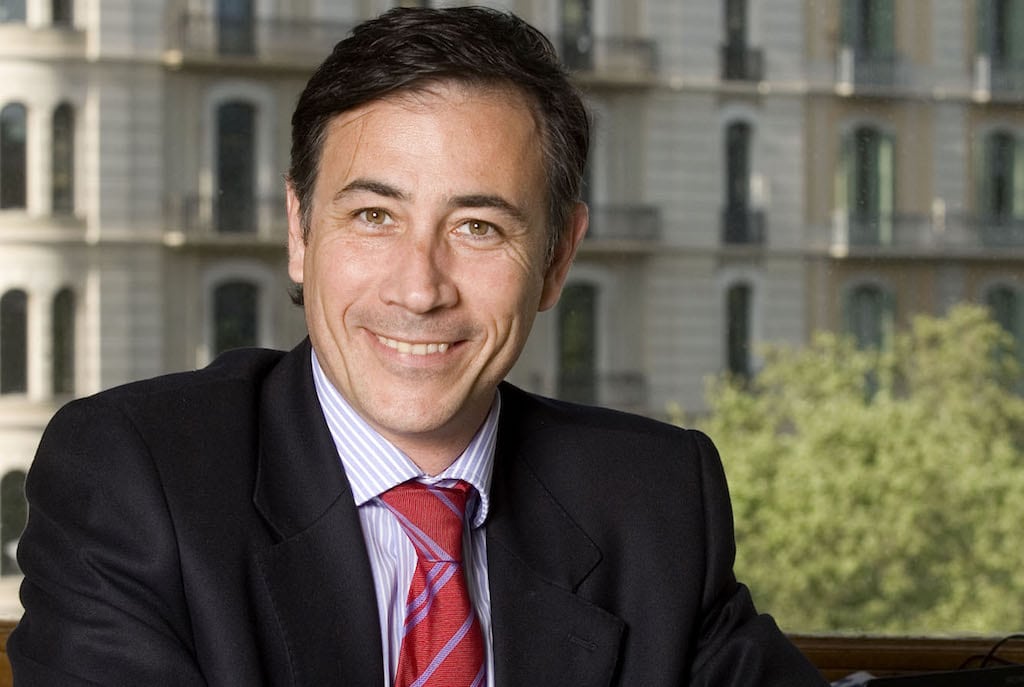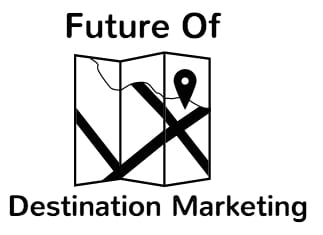Skift Take
Barcelona's reputation as both a Spanish and international destination is part of what makes it the region's greatest draw, which also translates into visits up and down Catalonia's Mediterranean coast.
Editor’s Note: Skift is publishing a series of interviews with CEOs of destination marketing organizations where we discuss the future of their organizations and the evolving strategies for attracting visitors. Read all the interviews as they come out here.
This continues our series of CEO interviews that began with online travel CEOs in Future of Travel Booking (now an e-book), and continued with hotel CEOs in the Future of the Guest Experience series (which is also an e-book).
Barcelona’s reputation as an international metropolis places it among Europe’s largest tourist destinations. It often attracts more attention than the region where it resides. Catalonia, however, is a unique region that is part forest, sea and city.
It is most often talked about globally when the topic of secession from Spain comes up, which seems to be happening more frequently. Were that to happen, its tourism draw would not diminish but likely would increase although it depends on the circumstances.
Skift recently spoke with Xavier Espasa, CEO of the Catalan Tourist Board, about how the destination marketing organization positions itself in relation to Spain and its urban competitors, its successful influencer projects and the rewards of setting up a sales portal in addition to marketing campaigns.
An edited version of the interview follows:
Skift: Do you identify Barcelona more as a Spanish destination or more as an international destination?
Xavier Espasa: Barcelona is known around the world, not just as a tourist destination but also for business, sport, and culture. Catalonia is a Mediterranean destination that, in tourism terms, can be compared with Tuscany in Italy or Cappadocia in Turkey. We are operating within an international framework. It also competes with international destinations such as Paris, London, Rome or New York.
Skift: How do you stand out from other cities within Europe?
Espasa: Catalonia has a series of features which, taken together, make it a unique tourist destination. First of all, its geographical location is ideal, with mild weather all year round. Second, we have a high-quality tourism offering and infrastructure that guarantees a comfortable stay for tourists. Third, an enormous diversity of products in a relatively small territory—just over 30,000 square kilometers— which means that tourists can enjoy a wide variety of experiences without requiring considerable effort or traveling long distances.
And lastly, a unique culture, heritage and gastronomy that offers tourists the possibility of enjoying experiences that they will not find anywhere else For example, watching the castellers build human towers, trying pa amb tomàquet, our bread rubbed with tomato, or making their own Cava.
Skift: What impact does Catalonia’s occasional calls for secession from Spain have on tourism?
Espasa: In 2014, 16.7 million foreign tourists came to Catalonia, 7.2% more than in 2013, and revenues from foreign tourism were in excess of 15 billion euros ($16.08 billion), 6.1% more than the year before. These are the best figures in the Catalonia’s history so we don’t think that the issue of secession is affecting tourism in Catalonia.
We have very loyal markets such as France, Germany, the UK, and other emerging markets are very interested in Catalonia, such as the United States and countries in Southeast Asia. I do not think that this situation would change if Catalonia became independent of Spain.
Skift: Travelers today are relying more on their mobile phones, researching more heavily before a trip, reading user-generated content, and following aspirational content produced by people and brands. How are DMOs evolving to adapt to today’s traveler habits?
Espasa: Catalonia is a leading tourist destination. And so that it can continue that way, the Catalan Tourist Board must continue to be active internationally in tourism promotion and marketing.
In 2013, the Catalan Tourist Board presented the Tourism Marketing Plan for Catalonia, which defined a new way of working and promoting tourism, with new products, closer public-private sector cooperation and innovative but cost-effective formulas. One of the most important points made in this marketing plan was the need to change how tourism promotion was done, moving from a basically offline approach to a more online, innovative approach.
Skift: Can you explain or elaborate on this online innovative approach? What does that mean and how will it help you better reach tourists?
Espasa: As we know in digital communication, an innovative approach doesn’t only relate to the number of social media platforms you use, the social customer relationship management you develop, and the average number of devices you generate content for. It also relates to your digital voice, the relationships you create with influencers and communities, the capacity to foresee trends and your ability to understand the needs of the tourism sector and learn from what other destinations are doing in digital.
If you want to understand what tourists are searching for nowadays, you need to have eyes and ears everywhere, and be able to learn by doing and sometimes by letting go.
Skift: Consumers are more informed and destinations are making themselves more tourism-friendly. Is your competitive set changing or evolving at all?
Espasa: General speaking, competition remains the same. There are maybe more destinations to visit, but there are also more people traveling.
What has changed is how people travel and especially how they decide where to travel. Intermediaries used to be more important and tour operators had more weight. Now, especially in local markets, people organize their own travel over the Internet.
In this respect, Catalonia is well-positioned so we don’t notice destinations “taking” tourists. On the contrary, 2014 figures have been exceptional.
Skift: What trends are you seeing in terms of destination marketing including its tone, how it’s done, and how it’s communicated to travelers?
Espasa: The world is becoming increasingly visual and marketing trends are no exception. Consequently, the Catalan Tourist Board has worked particularly to adapt to these trends.
In 2012, it was one of the first organizations in Europe to organize an Instagram trip, bringing a dozen international instagrammers to Catalonia to promote the destination; the initiative received so much attention that other destinations copied it.
Last year, five internationally renowned video artists were invited to create five pieces to promote Catalonia on Vimeo and YouTube. The result was five high-quality videos – two of them recognized as Vimeo Staff Picks – that can be viewed on Catalunya Experience’s YouTube channel. They have already accumulated more than 2.5 million plays.
Skift: How do you measure the impact of Instagram or video campaigns? Is there any way to measure whether they translate into increased visits?
Espasa: We have recently had the best figures in terms of visitors and revenues in Catalonia’s history so this is not something to downplay. However, what we pursue in social media campaigns is this feeling of, “I want to know more, I want to be there,” which can be measured by likes, comments and user-generated content.
There are as many places and stories to tell and share as followers. It doesn’t matter their level of influence. Our aim is that these single, artistic, unique and valuable voices are spread out.
Skift: What are the most important marketing platforms that you use today?
Espasa: The Catalan Tourist Board has agreements with online platforms to promote our destination. For example, the advertising campaign “Catalonia is your home” will be promoted through well-known travel booking platforms such as Rumbo, Atrapalo and eDreams as well as highly influential recommendation platforms such as Minube or TripAdvisor.
However, without a doubt, the most significant action we have carried out in this area was when we created a tourist experience sales platform through our portal catalunya.com. The board became the first authority in Europe to create an online package travel sales platform, enabling the purchase process to be started and completed on the same platform. This offers unique, diverse experiences to tourists that are difficult to find elsewhere.
Skift: Why don’t more destinations have online sales portals? Is this something that you expect more destination marketing organizations to create?
Espasa: To create a sales portal is not easy. It’s not only an economic or technologic issue. You must also have the co-operation and support of your destination’s tourism sector. They have to believe in the project and want to sell their products through this portal. We have been lucky and had this support from the very beginning. We are working with them now to make this tool grow with new ideas and experiences.
Skift: Destinations consistently struggle with funding. Do you see this changing in the next five to 10 years? Why is it so hard for DMOs to get funding even as travel grows and its economic significance is better realized? What would be a better business or financial structure for the organizations?
Espasa: In November 2012, the Catalan government approved a tax on stays in tourism establishments. This tax, which last year raised more than 40 million euros ($42.9 million), has been a key source of funds to continue promoting Catalonia as a tourist destination.
In coming years, finding alternative sources of finance that come from tourism itself will be vital for continued growth, provided that this growth is based on a model of economically, socially and environmentally sustainable tourism.
Skift: If you have 10 times more funding, what would you do with it?
Espasa: In recent years, we have focused on segmenting tourism promotion and adapting it to each market. How Catalonia is promoted and sold in nearby markets such as France, Germany and the United Kingdom is different from how it’s promoted and sold in more distant and emerging markets such as Southeast Asia, South America or the United States.
If we had more resources, our promotion would probably be finer-tuned to each market, studying exactly what type of product each customer wants and trying to reach these customers with a targeted offering.
In every market, we promote products that travelers from that market are most interested in. There are markets, such as Germany, which are very interested in issues related to nature and tourism. Nordic countries tend to be interested in golf. The Brazilians, a market where we only recently started promotion, are interested in Formula 1. The United States is a market interested in cultural and gastronomic tourism.
In short, you have to know your customer and give them what they want.
The Daily Newsletter
Our daily coverage of the global travel industry. Written by editors and analysts from across Skift’s brands.
Have a confidential tip for Skift? Get in touch
Tags: barcelona, fodm, marketing, spain
Photo credit: Xavier Espasa, CEO of the Catalan Tourist Board. Catalan Tourist Board

